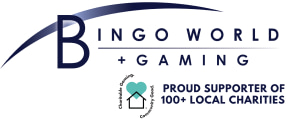Lennox-Gastaut syndrome is an extremely destructive disorder, which still has many physicians baffled. It affects between 3 to 10 per cent of children with epilepsy, more commonly in males. The peak age for onset is between three to five years of age with extreme incidence occurring in the first and tenth years of life. There is commonly a history of epilepsy in the family of the affected individual, though there is no known case of familial Lennox-Gastaut syndrome.
The most characteristic manifestation of the Lennox-Gastaut syndrome is in a large variety of seizures.
Tonic seizures, the most inherent kind associated with the syndrome, may occur at any time, both day and night. Such seizures may be axial, axorhizomelic, and global. They are usually brief, and consciousness is often impaired. Those cases that appear nocturnally usually occur during the periods of slow-wave sleep in the latter part of the night.
Atypical absence seizures are also present in many cases of the syndrome. Such seizures can begin and end gradually. Consciousness may be only partially affected. The patient may continue to be active, however distant or abstracted his/her thoughts may seem.
Often, there is a loss of tone in the face and neck muscles of the patient accompanied by impaired balance and an abnormal posture. The patient may lean forward with his/her mouth open and signs of myoclonic epileptiform activity may become evident in a twitching of the eyelids and mouth. In such cases, massive myoclonic jerks, myoclonic-atonic attacks, as well as atonic seizures may occur, though much less frequent and severe than the other manifestations.
Tonic-clonic, clonic, or partial seizures are also characteristic of the syndrome and, thereby, symptomatic of an underlying cerebral disorder.
Though such a multitude of disorders can be problematic, an even greater threat to Lennox-Gastaut syndrome patients exists. Severe cases of status epilepticus may develop, disabling one’s consciousness and causing a continuous array of atonic and myoclonic-atonic seizures. Such seizures may persist through days, weeks or even months, causing possible mental and physical repercussions and ultimately, death. Furthermore, the associated destruction and subsistent effects of status epilepticus are resistant to therapy and possibly recurrent.
Approximately 5 per cent of Lennox-Gastaut syndrome patients die from inherent problems and complications within 10 years of its onset. The disorder often persists into adulthood causing a multi-faceted array of emotional problems in up to 25 per cent of patients. Almost all patients continue to have disabilities varying from learning arrest, loss of previously-developed skills, language difficulties and impaired organization of movement.
Approximately 50 per cent of chronically-affected adults are completely dependent. Only 17 per cent are completely independent. Unfortunately, the syndrome is resistant to therapy, complicating the possibilities of rehabilitation.
Treatment with phenytoin, carbamazepine, and phenobarbital is almost always ineffective. Research with sodium valproate, benzodiazepines (particularly nitrazepam and clonazepam), lamotrigine, vigabatrin, intravenous immunoglobulin therapy, and the ketogenic diet are slowly breaking the barriers to a successful treatment for Lennox-Gastaut syndrome patients.
Click here to learn about other types of seizures.






